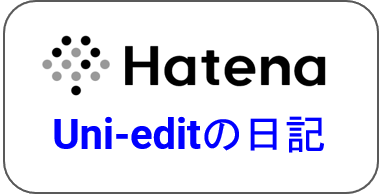難易度:中級
Tip003「並列構造」は5つのパートに分かれています。今回のヒントはパートBになります。
冠詞あるいは前置詞が連続した語句のすべてに適用される場合、その冠詞あるいは前置詞は
- 最初の語句の頭にだけ付けるか
- すべての語句の前で繰り返さなければなりません。
例文を見てみましょう:
(誤)We analyzed the French, the Italian, Spanish, and Portuguese populations.
(正A)We analyzed the French, the Italian, the Spanish, and the Portuguese populations.
(正B)We analyzed the French, Italian, Spanish, and Portuguese populations.
(訳:我々はフランス、イタリア、スペイン、そしてポルトガルの住民を分析した。)
説明:間違った例文では、最初の二つの語句の前にだけ「the」が付き、残り二つには付いていません。これは読み手を落ち着かなくさせます。正解文Aではすべての語句に「the」が付いており、正解文Bでは最初の語句にだけ「the」が付いています。
もう一つの例です:
(誤)One can visit Tokyo in spring, summer, or in winter.
(正A)One can visit Tokyo in spring, summer, or winter.
(正B)One can visit Tokyo in spring, in summer, or in winter.
(訳:東京には春、夏、冬に訪れることができる。)
アイコンをクリックして、チップをダウンロードする: 並列構造(パートB)— 並列構成での定冠詞「the」の使い方
並列構造(パートB)— 並列構成での定冠詞「the」の使い方
Uni-edit English Writing Tip: Parallel structures Part B — Using 'the' in parallel constructions
Level of difficulty: Intermediate
This is the second part in a five part series about using parallel structures. This part focuses on the user of ‘the in parallel constructions.
While editing English manuscripts, Uni-edit editors often need to correct sentences for correct usage of parallel structures. Correct use of parallel structures makes the writing easier to read and easier to understand for native-speakers of English and for non-native speakers of English.
An article or a preposition applying to all the members of a series of terms must be used:
- only before the first term, or
- repeated before each term.
Here is an example:
Incorrect: We analyzed the French, the Italian, Spanish, and Portuguese populations.
English corrected A: We analyzed the French, the Italian, the Spanish, and the Portuguese populations.
English corrected B: We analyzed the French, Italian, Spanish, and Portuguese populations.
Explanation: The first two items in the incorrect example use 'the' before the terms, but the last two items do not. This is uncomfortable for the reader. In the Correct A, every item in the list uses 'the'. In the Correct B sentence, 'the' is used at the start of the list only.
Here is another example:
Incorrect: One can visit Tokyo in spring, summer, or in winter.
English corrected A: One can visit Tokyo in spring, summer, or winter.
English corrected B: One can visit Tokyo in spring, in summer, or in winter.



